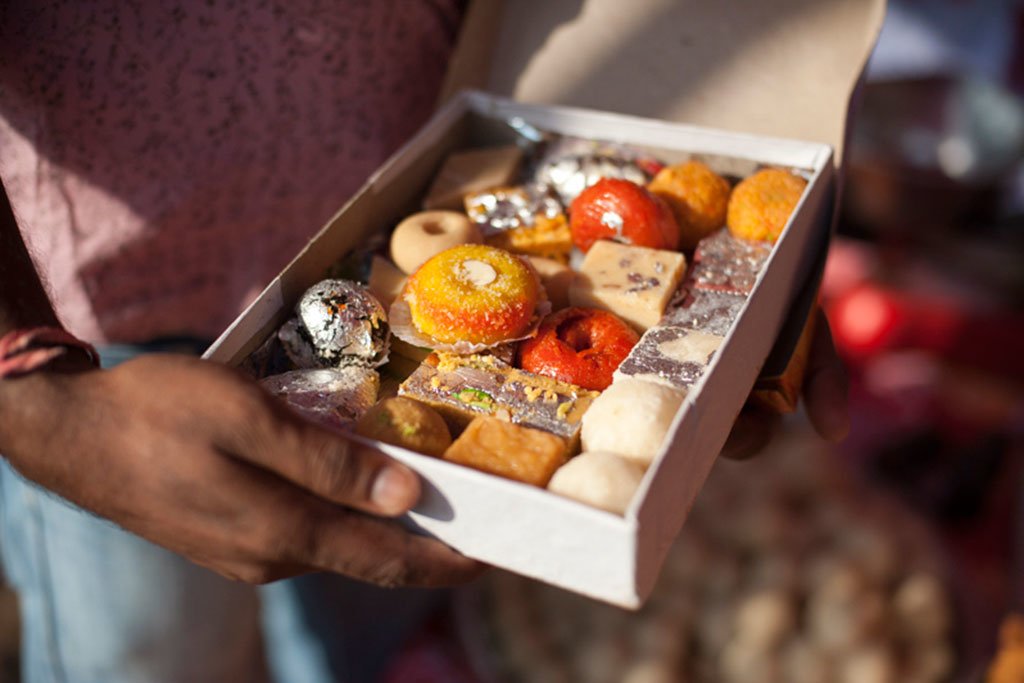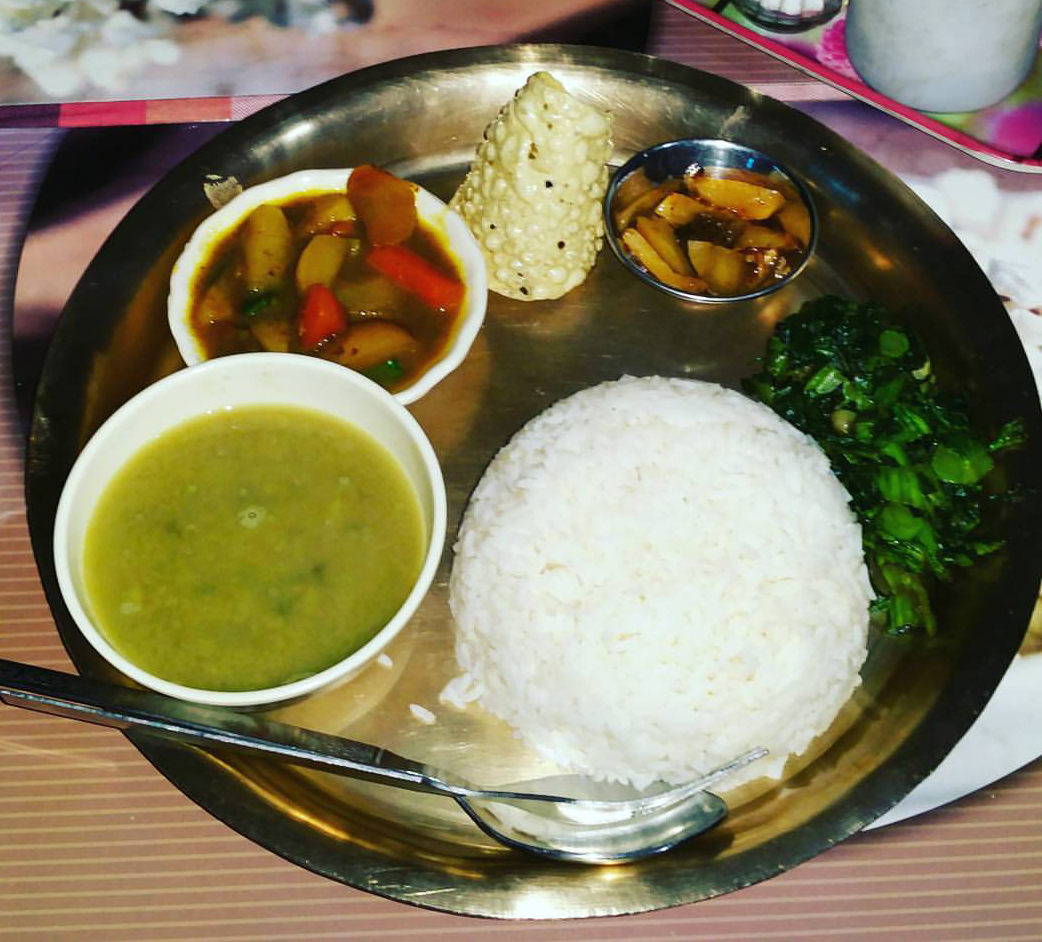
Influenced by both Indian and Tibetan cuisine, Nepalese food has its own rich flavors and aromas. Here’s a selection of dishes you shouldn’t miss during your trip to Nepal.
## Exploring the Culinary Landscape of Nepal: A Deep Dive into Local Flavors
Nepal, a land of breathtaking landscapes and vibrant culture, also boasts a rich and diverse culinary heritage waiting to be explored. From hearty staples to unique regional specialties, Nepalese cuisine offers a delightful adventure for the palate. Prepare to embark on a gastronomic journey as we delve into the must-try dishes and dining experiences that Nepal has to offer.
### Dal Bhat: The Heart of Nepalese Cuisine
No exploration of Nepalese food is complete without experiencing Dal Bhat, the undisputed national dish. It’s more than just a meal; it’s a daily ritual for many Nepalis, often enjoyed twice a day. Imagine a traditional steel platter, reminiscent of the Indian thali, presented before you. At its heart lies a mound of perfectly steamed rice, the foundation of the meal. Surrounding this central element is a bowl of dal, a flavorful lentil soup simmered with dried beans and peas, providing a comforting and nutritious base.
But the experience doesn’t end there. A medley of curried mixed vegetables adds color and variety, while a fiery achar, a spicy sauce crafted from chilies and an array of local spices, provides a delightful kick. In many restaurants, you might also find Dal Bhat served with accompanying bowls of tender chicken or flavorful lamb, adding an extra layer of richness to the meal.
For those venturing into the majestic landscapes of Nepal, particularly while trekking, Dal Bhat emerges as the ultimate trekking fuel. As one expert notes, fried eggs are a perfect breakfast, momos make a great lunch, and Dal Bhat is the perfect dinner. Nepal’s national dish, with its generous serving of steaming rice, is complemented by dal, which is generously poured over the rice, and lightly curried seasonal vegetables. Depending on the region, you might find variations. In the lower country, a tangy tomato achaar might accompany the dish, while at higher elevations, pickled sour vegetables provide a refreshing counterpoint. Beyond its deliciousness, Dal Bhat is also a champion of healthy eating, combining the essential amino acids of dal and rice to create a complete protein meal, providing sustained energy for your adventures.
The traditional way to savor Dal Bhat is a true immersion into the local culture. The locals expertly pour the warm dal over the rice, adding the vegetables and spicy sauce to their liking. With their right hand, they knead the mixture into small, compact balls before deftly pushing it into their mouth using their thumb. While this method might take some practice, it’s a unique way to experience the textures and flavors of the dish. Of course, if you prefer a more familiar approach, you can always enjoy each element separately or mix them all together using a spoon – no judgment here!
### Momos: A Taste of Tibet in Nepal
Another cornerstone of Nepalese cuisine is the beloved momo. These delectable dumplings, believed to have originated from Tibetan travelers, bear a striking resemblance to Chinese dumplings. Crafted from a delicate white-flour dough, momos are generously filled with a variety of ingredients, including succulent chicken, fresh vegetables, or savory buffalo meat. They are then carefully steamed to perfection, resulting in a tender and flavorful treat.
Momos are often served with a flavorful pickled sauce, perfect for dipping and adding an extra layer of complexity to the flavor profile. When exploring the regions closer to Tibet, the mountainous terrain reveals a unique twist on the classic momo. Here, you’ll often find moon-shaped momos that have been fried, providing a crispy exterior and a satisfying crunch.
### Gluten-Free Delights in Nepal
For those with gluten sensitivities or dietary restrictions, Nepal presents a surprisingly welcoming culinary landscape. The extensive use of rice, lentils, chickpeas, and corn makes it a haven for gluten-free dieters. Many traditional dishes naturally exclude gluten-containing ingredients, allowing you to fully immerse yourself in the local flavors without worry. Wealthier Nepalis and tourists have the option to order dishes featuring poultry and lamb. Those protein sources are luxuries in this Hindu country where cows are sacred, making beef and veal dishes rare.
### Asan Market: A Sensory Overload in Kathmandu
Prepare to be captivated by the vibrant sights, sounds, and smells of Asan Market in Kathmandu. Navigating the narrow streets and alleys of this bustling marketplace is an experience in itself. Asan is located where six streets converge, and is home to a traditional Asian bazaar, straddling one of the two legendary India-Tibet trade routes that wind their way through Kathmandu.
Here, you can find just about anything your heart desires, from essential kitchenware and elegant tea pots to vibrant women’s clothes and sparkling jewelry. Steeped in history, Asan has long been a hub for small shops and stalls overflowing with spices, herbs, molasses, teas, pickles, nuts, and even beaten rice.
As you wander through the market, your senses will be overwhelmed in the best way possible. The earthiness of cumin and coriander mingles with the sweetness of molasses and the pungent scent of freshly roasted peanuts, creating a symphony of aromas. Take your time to explore the stalls, carefully consider your purchases, and be prepared to bargain for the best prices. Remember to bring plenty of rupees, the local currency, to fully immerse yourself in the shopping experience.
For those interested in delving deeper into Nepalese cuisine, consider participating in local cooking classes. These classes often begin with a visit to the local market to source the freshest ingredients. Under the guidance of a Nepali chef, you’ll learn to prepare your favorite dishes, gaining a hands-on understanding of the techniques and flavors that define Nepalese cooking.
### Newari Cuisine: A Culinary Adventure
The Newars, an indigenous ethnic group residing in the Kathmandu Valley, are renowned for their unique and diverse cuisine, boasting an astounding repertoire of over 200 dishes. A journey into Newari cuisine is an exploration of bold flavors, unique ingredients, and culinary traditions passed down through generations.
Be sure to sample these dishes:
* **Chatamari:** A flat crepe crafted from rice flour and generously topped with vegetables, yak cheese, eggs, and ground meat.
* **Baji (bahee):** A dish featuring beaten rice, resembling rolled oats, served with a medley of vegetables and a spicy sauce. It’s Newari’s own spin on Dal Bhat.
* **Choyila (choyeela):** A flavorful dish showcasing fried buffalo meat, expertly mixed with greens and spices.
However, Newari cuisine is perhaps best known for its adventurous use of animal body parts not commonly found in Western cooking. Dishes featuring tongue, spine, bone marrow, and lungs are considered delicacies. While the idea might seem daunting to some, don’t be deterred! These dishes are often incredibly delicious, showcasing the culinary ingenuity and resourcefulness of the Newari people.
Another interesting element to Newari cuisine is Yomari (yomaree), a snack paired with tea that’s offered in festivals as thanks for a successful harvest. These steamed treats are shaped like pointed fig fruits and are made with a rice-flour dough and filled with sugarcane molasses, ground sesame seeds and coconut.
The Newar people are known for their arts, crafts, and trading skills. They also love food, and if you are a meat lover, and really love every part of the beasts, you can feast on spicy tung, brain and lungs at any Newari restaurant, served with beaten rice and strong rice wine. Vegetarians can also enjoy Newari food and can order lentil baras, bamboo shoot curry, Newari pizza called chatamari and fried soybeans with ginger and garlic.
### Drinks of Nepal
In the Newari regions of the Kathmandu Valley, the most popular beverages are Chhaang (chang), a traditional rice beer, and Aylā (aeela), a potent spirit made from distilled rice and cereals. Raski, commonly found in Kathmandu, is similar to tequila or sake and is crafted from distilled rice or millet. Tongba, another local favorite, is made from fermented millet and served in a unique and interactive way. It is served in a jug with a straw and a flask of hot water. The process involves pouring the hot water into the jug, allowing it to steep, and then sucking the brew through the straw until you reach the bottom, creating a warm and flavorful beverage.
### Essential Tips for Culinary Exploration in Nepal
Generally speaking, street food in Nepal is safe to consume. A simple way to assess the safety of a street food vendor is to observe their popularity – if the hawker is busy and locals are frequenting their stall, it’s generally a good sign. You’ll find a variety of roasted nuts, fresh fruits, and other savory and sweet snacks readily available in most areas and cities. Thamel, Kathmandu is known for their food carts.
However, it’s generally not advisable to drink tap water in Nepal. Bottled water is readily available, affordable, and safe to consume. In restaurants and hotels, warm water is often offered. Before consuming hot beverages like tea and coffee, ensure that the water used has been properly boiled.
By embracing the local flavors, venturing into bustling markets, and being mindful of food safety, you can embark on an unforgettable culinary adventure in Nepal.


